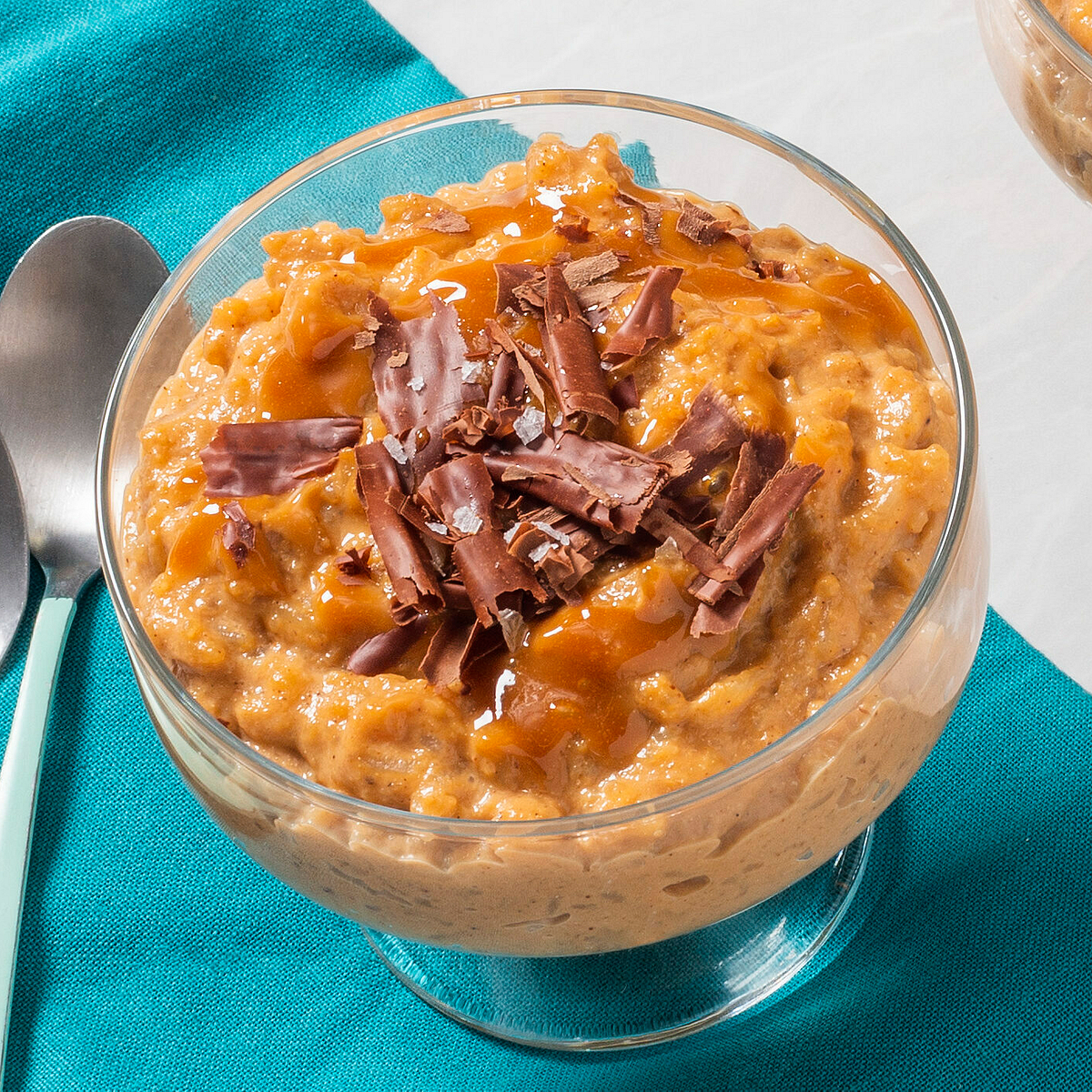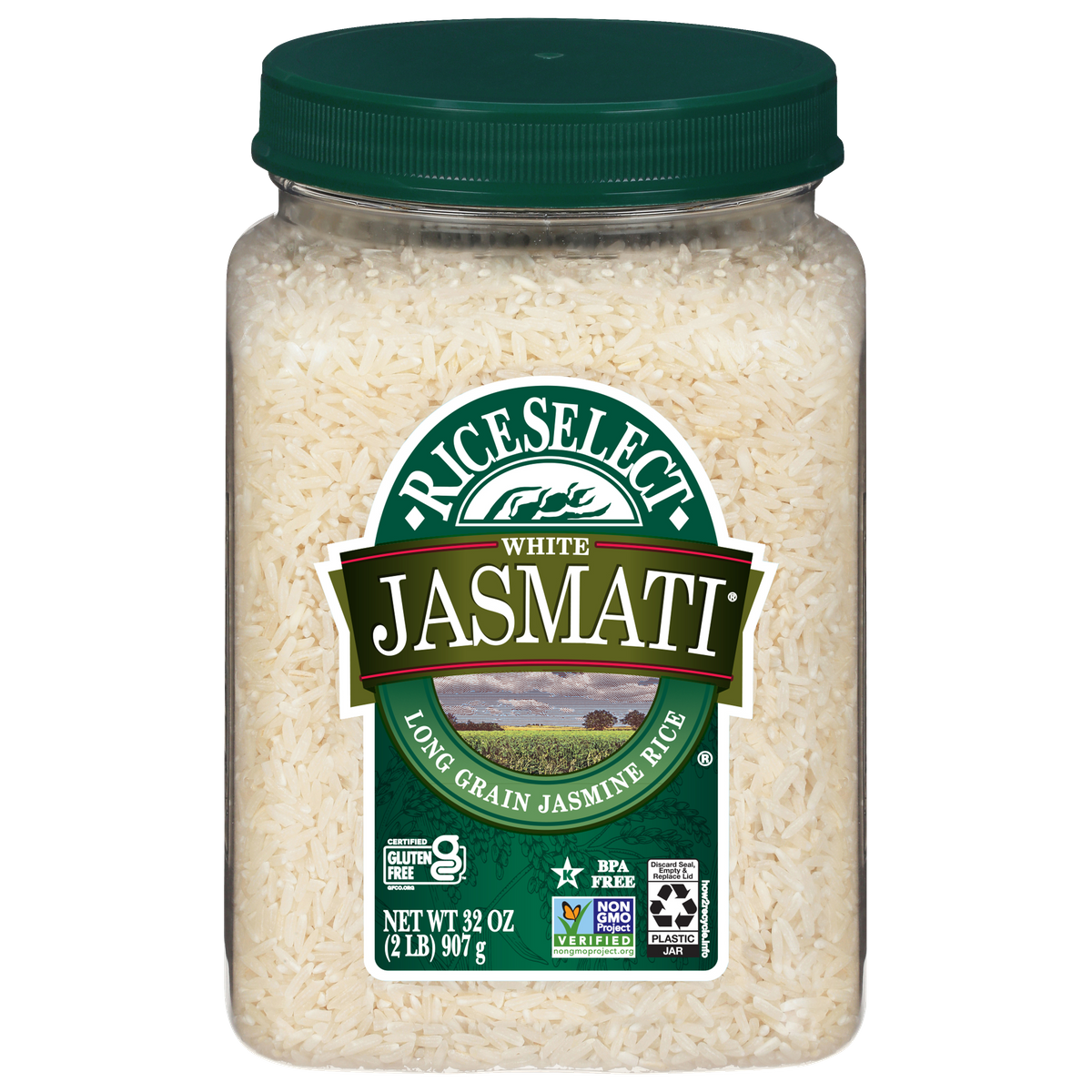Ingredients
- Salted Caramel:
- Rice Pudding:
Instructions
Salted Caramel:
In a medium saucepan set over low heat, add sugar. Do not touch or stir the sugar (or it will crystalize); let melt for 18 to 20 minutes or until sugar is a dark amber color. Add butter and stir gently for 1 to 2 minutes or until melted. Remove from heat. Slowly stir in cream. Bring back to low heat and cook, stirring occasionally, for 1 to 2 minutes or until thickened and bubbly. Remove from heat and sprinkle with salt. Keep warm; set aside.
Rice Pudding:
In an Instant Pot, stir together RiceSelect® Jasmati Rice, milk, cinnamon, vanilla and 1/2 cup Salted Caramel sauce. Lock lid and cook on the high pressure setting for 10 minutes. Quick release pressure. Let cool slightly.
Divide rice pudding among 4 small serving bowls and drizzle with remaining Salted Caramel sauce. Top with shaved dark chocolate.
Tip:
Leftover Salted Caramel sauce can be stored in an airtight container in the fridge for up to 1 month. Drizzle over ice cream, yogurt bowls or fruit for an easy dessert.
Using Vanilla Extract in Recipes
Have you ever observed that vanilla extract is a common ingredient in dessert recipes? It is used in baking because it brings out the flavors of other components like milk, sugar, and so forth. The most important function of it is to mask the odor of uncooked eggs. Anything that calls for raw eggs typically contains at least a little amount of vanilla essence to mask the taste and smell.
Cooking Tip: Keep in mind while making some desserts that vanilla extract may vaporize when heated as a liquid due to its alcohol content and will result in the loss of some of the flavor.
Among other interesting statistics, vanilla is the most consumed flavor worldwide and the second most expensive flavoring to make (though saffron takes the lead).
Vanilla Extract vs. Vanilla Essence?
In general, pure vanilla extract is more expensive. You might be curious to know how the two differ, other than price.
Vanilla beans are soaked in a solution of water and ethyl alcohol to produce vanilla extract. The extract gets its signature vanilla flavor from a molecule called vanillin found in vanilla beans. When vanilla bean pods are mature and have been aged for three to four months, they can develop the distinctive flavors of vanilla, including higher levels of vanillin.
The usual ingredients used to create vanilla essence, also known as artificial vanilla extract, are water, ethanol, propylene glycol, emulsifiers, and fragrances and colors that are chemically manufactured.
The flavor of vanilla essence comes from vanillin, just like that of vanilla extract, but it's a lab-made (synthetic) form that costs significantly less than using vanilla beans.
Are They Interchangeable?
Dishes that are either raw or cooked slowly tend to show this disparity more prominently. Thus it's better to use pure vanilla essence for sweets like puddings, custards, pastry creams, and icings.
However, for baked goods that aren’t expected to have a noticeable vanilla flavor, such as chocolate chip cookies or carrot cake, you likely won’t notice much of a difference using vanilla essence.
Additionally, depending on the brand, the flavor of vanilla extract is generally twice as strong as that of vanilla essence. So if you’re using vanilla essence in a recipe that calls for pure vanilla extract, you’ll want to use up to twice as much.
See if you can taste the difference in this Sticky Rice with Caramelized Bananas.
More Meal Inspiration
If you are struggling for more meal inspiration, why not try making couscous?


